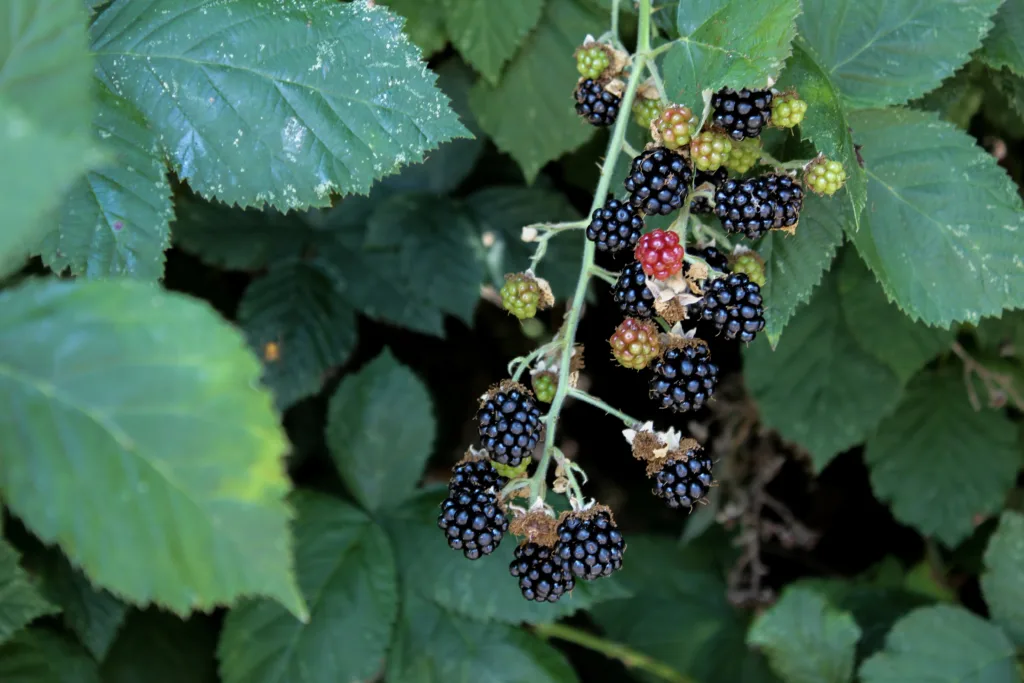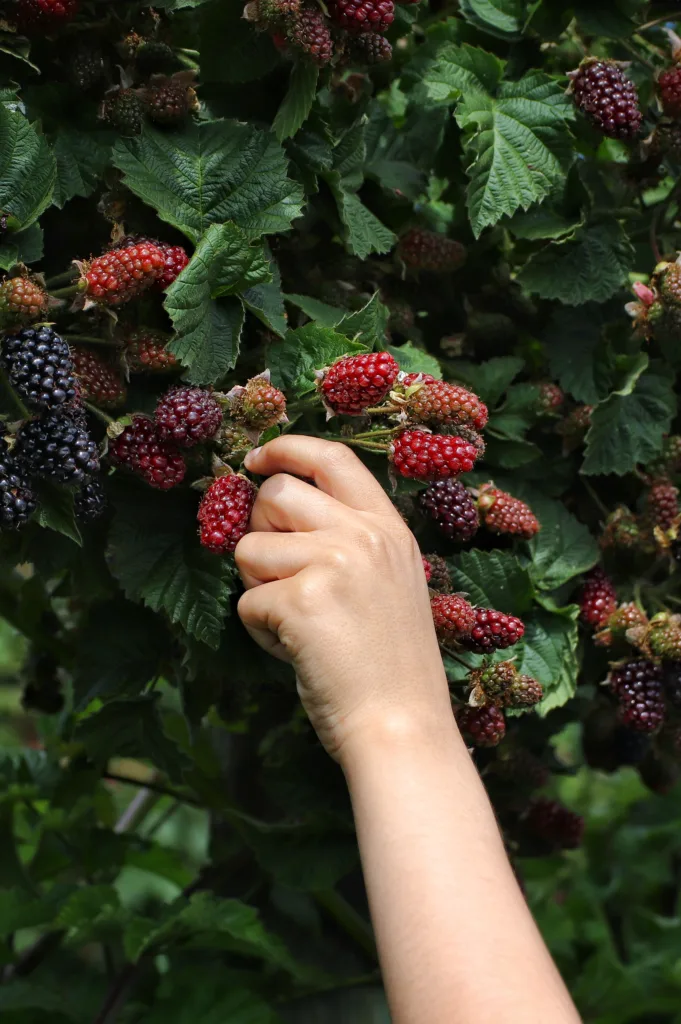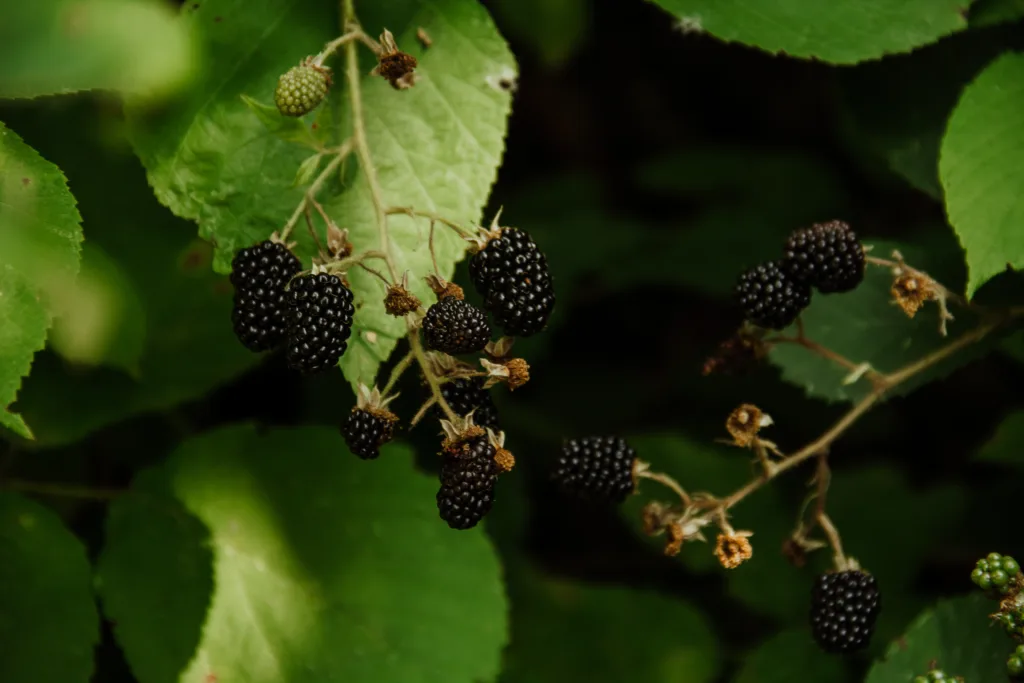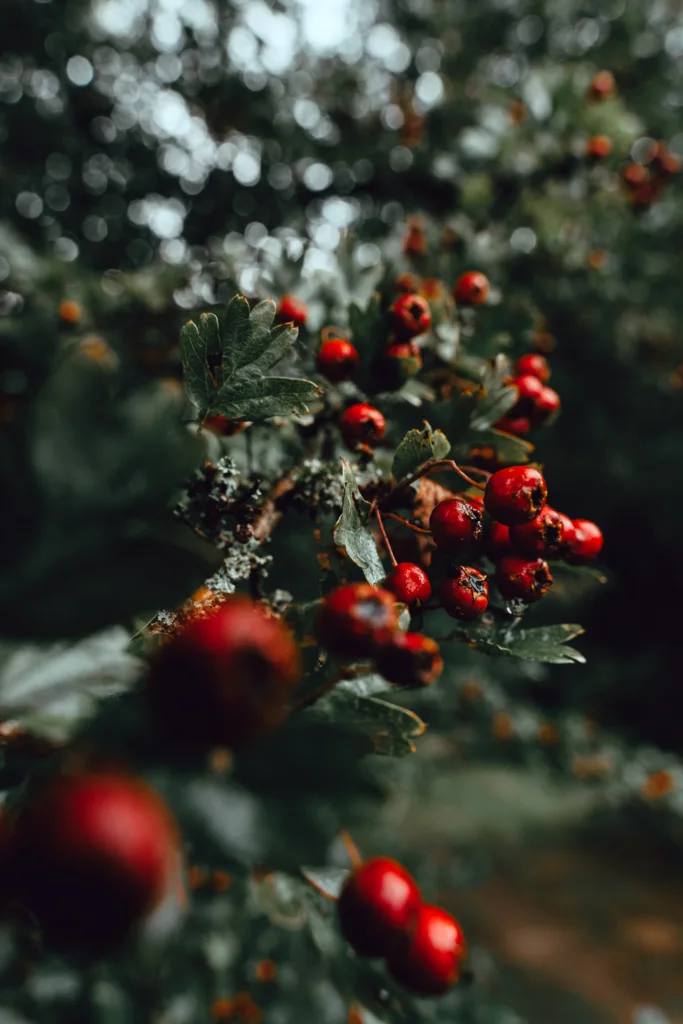Blackberries are a delicious and nutritious fruit that are enjoyed by many people all around the world. They are a member of the rose family, and are closely related to raspberries. But unike raspberries, blackberries grow on thorny bushes rather than canes.
Contrary to popular belief, blackberries do not grow on trees. They are actually a type of bramble bush that can grow up to 10 feet tall. The bushes can be quite invasive, and they spread quickly by sending out underground shoots.
Blackberries are known for their sweet and tart flavor, and are a good source of vitamins C and K, fiber, and antioxidants. They are also low in calories, making them a great addition to a healthy diet.
If you want to grow blackberries in your own backyard, there are a few things to keep in mind. First, blackberries prefer well-drained soil that is rich in organic matter. They also need plenty of sunlight, so make sure to plant them in a spot that gets at least 6 hours of direct sunlight per day.
Blackberry bushes are usually planted in the fall or early spring, and should be spaced about 3-4 feet apart. They require regular watering, especially during dry spells, and should be fertilized once a year in the spring.
When it comes to harvesting blackberries, it’s important to wait until the berries are fully ripe before picking them. Ripe blackberries are deep black in color, and should come off the bush easily when gently tugged. Unripe berries will be firm and red or purple in color, and should be left on the bush to ripen further.
Blackberries are a wonderful fruit that are easy to grow and enjoy. While they don’t grow on trees, they do require some care and attention to thrive. By following the tips outlined above, you can grow your own delicious blackberries and enjoy their sweet and tangy flavor all season long.
The Safety of Eating Blackberries From a Tree
Blackberries do not grow on trees, but on prickly bushes. However, it is safe to eat blackberries that grow on these bushes as long as they are ripe and not contaminated by any chemicals or pollutants. Blackberries have a distinct appearance, and their clusters of small, black, shiny fruits are easy to identify. It is important to note that blackberries growing on private property should not be harvested without the owner’s permission. Additionally, it is always a good idea to wash any wild berries thoroughly before consuming them to remove any dirt, insects, or bacteria that may be present.

Do Blackberries Grow on Trees or Vines?
Blackberries are typically grown on a vine or a small shrub. While they may have a woody stem, they do not grow on a tree. Blackberries are part of the Rubus genus, wich includes other fruits such as raspberries and boysenberries. These plants are known for their thorny canes, which can grow up to 20 feet in length. The canes of blackberries are often trained to grow on trellises or fences for support, but they are not considered a tree fruit like apples or pears. Instead, they are a delicious and nutritious berry that can be enjoyed fresh or used in jams, pies, and other desserts.
Are Blackberries Poisonous?
No, there is no poisonous berry that looks like a blackberry. Blackberries are unique and distinct in their appearance and have no toxic look-alikes. The only berry that may be confused with blackberries is the wild black raspberry, which is smaller, sweeter, and has a hollow core when picked, unlike blackberries, which have a solid core. Therefore, it is safe to consume blackberries without fear of mistaking them for a poisonous berry.
Types of Edible Berries That Grow on Trees
There are various kinds of edible berries that grow on trees. One of the most commonly known is the mulberry, which produces a plentiful crop of sweet berries that are often used in baked goods and jams. Another tree that bears edible berries is the hackberry tree, which produces small, sweet, and slightly spicy berries that can be eaten fresh or dried. The Canada Buffaloberry is another tree that is popular for its edible berries, which are high in vitamin C and have a tangy flavor. The soapberry tree is also known for its edible berries, which are often used in traditional medicine and can be eaten raw or cooked. Additionally, the rowan tree produces small, bright red berries that are often used in jams and jellies, whle the yew tree produces small, fleshy berries that are both edible and poisonous, so caution must be taken when consuming them.
Picking Blackberries After September: Why It Should Be Avoided
Contrary to popular belief, the rule against picking blackberries after September 29 is not related to seasonality. Instead, it is derived from the story of the Archangel Michael, who is celebrated on this day. According to the legend, Michael defeated Lucifer in a massive battle and exiled him from heaven. Therefore, it is considered unlucky to eat blackberries after this date, as they are said to have been tainted by the devil’s touch. While this superstition has no scientific basis, it is still widely believed and followed by many people.

When Is It Not Safe to Pick Blackberries?
According to tradition, there is a specific date after which blackberries should not be picked. This date is commonly believed to be Michaelmas, which falls on September 29th. However, in some areas, the date may be later than this. The reason behind this tradition is that it is believed that after this date, the devil spits, stamps or does other unpleasant things on the berries, rendering them unfit for consumption. Therefore, it is recommended to avoid picking blackberries after this date to ensure that you are picking only fresh and safe berries.
Types of Berries That Look Like Blackberries But Grow on Trees
There are several berries that may resemble blackberries in appearance but grow on trees. One such berry is the mulberry, which is a dark purple or black fruit that grows on deciduous trees. Another tree-borne fruit that resembles blackberries are the boysenberries, which are a hybrid of blackberries, raspberries, and loganberries. Boysenberries are typically larger than blackberries and have a deep maroon color when fully ripened. Lastly, there are elderberries, which are small, dark purple fruits that grow in clusters on small trees or shrubs. While tese berries may look similar to blackberries, they each have their own unique taste and texture that sets them apart.
Do Blackberries Require Two Plants for Pollination?
Blackberries are self-fertile plants, which means they can produce fruit through self-pollination without the need for cross-pollination with another plant. Therefore, it is not necessary to have two different varieties of blackberry plants to produce fruit. However, having multiple plants can increase the yield of blackberries and improve the overall health of the plant. Additionally, having different varieties of blackberry plants can result in larger and more flavorful fruit. So, while it is not necessary to have two plants, it can be beneficial to have multiple plants or different varieties.
Do Blackberries Require Support for Climbing?
Yes, blackberries require some form of support to climb on. This is because blackberry canes can grow quite tall and heavy, and witout support, they can become tangled, damaged, or even fall over. Trellising is the most common way to provide support for blackberries. A trellis consists of posts and wires that the canes can be trained to grow along. The type of trellis needed depends on the type of blackberry being grown. For example, trailing blackberries require a more complex trellis system than erect blackberries. Ornamental, dwarf, everbearing, erect cultivars are an exception, as they do not require trellising, but they also produce lower yields. Overall, providing some form of support for blackberries is essential for healthy growth and a bountiful harvest.

The Dangers of Eating Wild Berries
One berry that should not be eaten in the wild is the holly berry. While these tiny berries may seem harmless, they actually contain a toxic compound called saponin. Ingesting holly berries can cause a number of unpleasant symptoms, including nausea, vomiting, and stomach cramps. Therefore, it is important to avoid consuming holly berries if you come across them while foraging in the wild. Instead, it is best to stick to well-known edible berries and plants that have been properly identified.
Are Wild Blackberries Contaminated with Harmful Worms?
The worms that can be found in wild blackberries are usually larvae of the Spotted Wing Drosophila (Drosophila suzukii). These larvae are safe to eat and won’t cause any harm if ingested. However, some people may find them unappetizing or unpleasant to eat due to their appearance. To avoid consuming the larvae, it is recommended to wash the blackberries thoroghly before consuming them. Additionally, it is important to note that the presence of these larvae in the berries may indicate that they are overripe or have been damaged, so it is advisable to consume them soon after picking to ensure freshness and quality.
Risk of Illness From Eating Wild Blackberries
Yes, it is possible to get sick from eating wild blackberries. Unripe blackberries contain a poisonous compound called solanine, which can lead to solanine poisoning when consumed in large quantities. Symptoms of solanine poisoning can include gastrointestinal issues like diarrhea, abdominal pain, and vomiting. Therefore, it is important to ensure that blackberries are fully ripe before consuming them to avoid any potential health risks. Additionally, it is recommended to wash the berries thoroughly before eating to remove any dirt or bacteria that may be present.
Identifying Poisonous Berries Found in the Woods
When it comes to identifying whether a berry from the woods is poisonous or not, it’s crucial to exercise caution and follow some essential guidelines.
Firstly, it’s advisable to avoid berries with a bitter or soapy taste, as these are commonly associated with toxic berries. Additionally, it’s important to steer clear of berries with an almond-like scent, as this cold be a sign of the presence of cyanide.
Secondly, it’s essential to have a good understanding of the visual features of different berry species. For example, clustered berries with tightly packed skin, like raspberries and blackberries, are generally considered safe to eat. Berries with blue, black, or purple skin are also usually safe.
On the other hand, berries with green, white, or yellow skin should be avoided, as they are often toxic. It’s also worth noting that some berries, such as elderberries, can be safe to eat when cooked but toxic when eaten raw.
In conclusion, when foraging for wild berries, it’s crucial to exercise caution and follow some basic guidelines to avoid consuming poisonous berries. When in doubt, it’s best to err on the side of caution and consult a field guide or a local expert to identify the berry accurately.

Conclusion
In conclusion, blackberries are a delicious and nutritious fruit that are easy to identify and even easier to grow. They are a native species to the United States and can be found in the wild or grown at home as a small shrub or trailing vine. With no poisonous lookalikes, blackberries are a safe choice for foragers and can be used in a variety of recipes, from jams and desserts to salads and smoothies. Blackberries are also a good source of fiber, vitamin C, and antioxidants, making them a healthy addition to any diet. Whether you’re a seasoned forager or just starting out, blackberries are a must-try wild edible berry.
